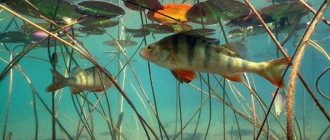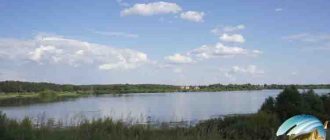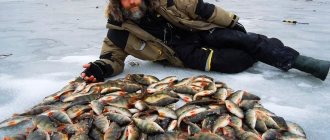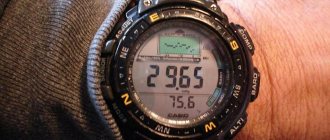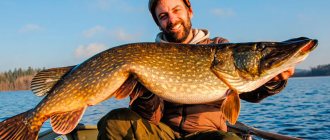- Prohibited fishing methods and gear in the Kirov region
- Prohibited periods and places of extraction (catch) of aquatic biological resources
- Types of aquatic biological resources prohibited for extraction
- Minimum size of aquatic biological resources caught
- Daily fish catch rate in the Kirov region
In 2020-2021, the Federal Law on Recreational Fishing came into force, but its provisions also do not contain specific prohibitions and rules for fishing. This law contains general provisions regarding recreational fishing.
Specific fishing rules are approved for each fishing basin.
On the territory of the Kirov region, the Fishing Rules for the Volga-Caspian fishery basin are in force, approved by Order of the Ministry of Agriculture of Russia dated November 18, 2014 N 453 (as amended in force in
2021
year). These rules apply throughout the region. The administrative center is the city of Kirov. Large cities and towns in the region: Kirovo-Chepetsk, Slobodskoy, Vyatskie Polyany, Kotelnich, Omutninsk, Yaransk, Sovetsk, Sosnovka, Zuevka, Belaya Kholunitsa, Luza, Urzhum, Kirs, Nolinsk, Vakhrushi, Orichi, Malmyzh, Murygino, Vostochny, Orlov , Darovskoy, Murashi, Pervomaisky, Krasnaya Polyana, Kilmez, Yurya, Demyanovo, Falenki, Leninskoye, Kumeny, Lesnoy, Nagorsk, Kiknur, Rudnichny.
The Volga-Caspian fishery basin is divided into the Northern and Southern fishery areas, delimited by a conventional line running along the dam of the Volzhskaya Hydroelectric Power Station (the city of Volgograd).
The northern fishery region of the Volga-Caspian fishery basin includes the Volga River from the upper reaches to the dam of the Volzhskaya Hydroelectric Power Station (the city of Volgograd) with the basins of the rivers flowing into it, as well as all water bodies of fishery importance located in the territories of the Republics of Bashkortostan, the Republics of Mari El, Mordovia, Tatarstan, Udmurt Republic, Chuvash Republic - Chuvashia, Perm Territory, Belgorod, Bryansk, Vladimir, Volgograd (above the Volzhskaya Hydroelectric Power Station dam), Vologda (Rybinsk Reservoir and other water bodies of fishery importance in the Cherepovets region), Ivanovo, Kaluga, Kirov (beyond with the exception of water bodies of fishery importance in the Northern Dvina River basin), Kostroma, Kursk, Moscow, Nizhny Novgorod, Orenburg, Oryol, Penza, Ryazan, Samara, Saratov (with the exception of water bodies of fishery importance in the Don River basin), Smolensk, Tambov, Tver, Tula ( Oka River basin), Ulyanovsk, Yaroslavl regions and the city of Moscow.
Citizens have the right to carry out recreational and sport fishing in water bodies of public fishery importance freely and free of charge in accordance with the rules of fishing.
Forbidden tools and methods of fishing in the Kirov region
On the territory of the Kirov region it is prohibited:
- a) application: networks of all types;
- traps of all types and designs (merezh, venter, versh, “muzzle”, “pins”), with the exception of crayfish traps;
- passive production (catch) tools (“zakidushki”, “postavushki”, “pokes” and others) on rivers that are habitats for salmon species of fish;
- firearms and pneumatic weapons, crossbows and bows;
- fishing rods (including bottom fishing rods) and spinning gear of all systems and types with a total number of hooks (single, double or triple) of more than 10 pieces per citizen;
- trawling and dredging mining (catch) gear;
- net straining and seizing fishing gear (catch) and devices (drags, seines, drags, bastings, lifts, circles, “TVs”, “screens”, “grabs”, “drills”, “shards”, “capes”, “kerchiefs” ", "sakov", "kotsov", "krylatok", "German", "vozmilok", "rezhakov", "okhan" and others), with the exception of lifts ("spiders") and scoops - no more than one piece per citizen , size (length, width, height) of no more than 100 cm, and mesh size (pitch) of no more than 10 mm (including those used with bait) for the production (catch) of live bait (bait), except for especially valuable and valuable species of fish;
- piercing fishing (fishing) tools (spears and others), with the exception of amateur and sport fishing carried out using special pistols and guns for underwater hunting;
- catfish;
- traps;
- hook fishing gear;
- by the method of purpleing, jamming, rutting (including with the help of rattling and bogging);
Important. In amateur and sport fishing, the use of nets for fishing (catching) from fishing line (monofilament) is prohibited.
During amateur and sport fishing, the installation (construction) of huts and other stationary structures on ice is prohibited, with the exception of portable windproof devices.
Fishing on Vyatka
A large number of fishermen in the Kirov region, as well as from Tatarstan and Udmurtia, are attracted by fishing in Vyatka. The river is the most significant tributary of the Kama; it originates in the north of Udmurtia. The reservoir is characterized by sharp changes in flow directions, which creates many bends and turns.
Vyatka River
Usually in Vyatka you come across pike perch, pike, ide, perch, sabrefish, chub, burbot and perch. The ruff is ubiquitous. Occasionally, bersh, carp, sterlet and podust are caught. In the upper reaches the following types of fish are popular: bleak, gudgeon, dace, and roach.
If we take into account the fishing methods, then almost all gear is allowed here: donks, float rods, spinning rods, girders, etc.
Prohibited periods and places for fishing in the Kirov region
Forbidden places
Areas (places) prohibited for the extraction (catch) of aquatic biological resources have not been established in the Kirov region.
Prohibited fishing periods
Fishing rules on the territory of the Kirov region prohibit the fishing of fish and other aquatic biological resources:
- from the melting of the ice to June 10 - with all fishing (catch) gear, with the exception of one float or bottom fishing rod from the shore with a total number of hooks of no more than 2 pieces on mining (catch) gear for one citizen outside spawning grounds ;
- from December 15 to February 15 - burbot;
- from October 15 to June 30 - crayfish;
- from October 1 to May 1 - in wintering pits;
- from November 1 to April 14 - sterlet in the Vyatka River basin within the administrative boundaries of the Kirov region.
Spawning sites in the Kirov region
The following spawning grounds are located in the Kirov region, where fishing is limited during prohibited periods.
Name of spawning place
| Location | |
| Elder Kriusha | Arbazhsky district; |
| Eldress of Kazan | Arbazhsky district; |
| eldress Karakul | Vyatskopolyansky district; |
| oxbow Beluga | Kirovo-Chepetsky district; |
| eldress Borovskaya | Kotelnichsky district; |
| Elder Chernolasskaya | Kotelnichsky district; |
| Eldress Buretskaya | Malmyzhsky district; |
| Eldress Gonbinskaya | Malmyzhsky district; |
| oxbow Rossohovatka | Oric region; |
| oxbow Ilovatka | Oryol district; |
| Elder Pugachevskaya | Slobodskoy district; |
| eldress Shestakovskaya | Slobodskoy district; |
| eldress Volozhka | Urzhumsky district; |
| Eldress Dergachevskaya | Urzhumsky district; |
| eldress Petrovskaya | Yuryansky district; |
| Lake Sukhodol | Arbazhsky district; |
| Lake Kurya | Belokholunitsky district; |
| Lake Byzy | Vyatskopolyansky district; |
| Lake Krivoye | Vyatskopolyansky district; |
| Lake Petrovskaya Kurya | Kirovo-Chepetsky district; |
| Lake Vetluzhskoe | Kotelnichsky district; |
| Lake Dresvyanovo | Kotelnichsky district; |
| Lake Lever | Kotelnichsky district; |
| lake Holshovik | Kotelnichsky district; |
| Lake Ageldino | Malmyzhsky district; |
| Lake Asanovo | Nagorsky district; |
| Lipovye lakes | Nagorsky district; |
| Lake Slinkovo | Nagorsky district; |
| Lake Dolgoe | Nolinsky district; |
| Lake Berezovaya Kurya | Oryol district; |
| Lake Vasilyevskoe | Slobodskoy district; |
| Lake Potolokovo | Slobodskoy district; |
| Lake Kholunovo | Slobodskoy district; |
| Ataman lakes | Sovetsky district; |
| Atarskie lakes | Sovetsky district; |
| Lake Rybnoye | Sovetsky district; |
| Volozhka Vorobievskaya | Malmyzhsky district; |
| Volozhka Medvedskaya | Nolinsky district; |
| Volozhka Tsepochkinskaya | Urzhumsky district; |
| Volozhok Owl | Kotelnichsky district; |
| Volozhok Istobenskaya | Kotelnichsky district; |
| Volozhok Nazarovskaya | Oryol district; |
| backwater Mukhinsky | Vyatskopolyansky district; |
| Backwater Crawl | Vyatskopolyansky district; |
| backwater Armenian | Malmyzhsky district; |
| Kurya backwater | Malmyzhsky district; |
| backwater Meletsky | Malmyzhsky district |
| backwater Slinkovo | Nagorsky district; |
| backwater Tivanensky | Orichsky district; |
| backwater Chingalevsky | Oryol district; |
| backwater Zaychikovsky | Slobodskoy district; |
| Petropavlovsky backwater | Sovetsky district; |
| backwater Sychikha | Yuryansky district; |
| Staraya Vyatka channel | Malmyzhsky district; |
| Tuzh channel | Malmyzhsky district; |
| Chernakovo channel | Nolinsky district; |
| Buyskaya channel | Urzhumsky district; |
| — | Vyatka River (Arbazhsky district): 447 - 450 km of the shipping lane; |
| — | Vyatka River (Vyatskopolyansky district): 77 - 78, 80 - 85, 95, 103 - 108, 113 - 114, 117 - 119, 125 - 130, 135 - 138 km of shipping lane; |
| — | Vyatka River (Kotelnichesky district): 459 - 462, 471 - 483, 490 - 493, 514 - 520, 554 - 556 km of navigation; |
| — | Vyatka River (Malmyzhsky district): 138 - 145, 155 - 168 (including a complex of coastal water bodies adjacent to the right and left banks), 171 - 173, 205 - 207 km of the shipping lane; |
| — | Vyatka River (Lebyazhsky district): 306 - 312, 320 - 321 km of navigation; |
| — | Vyatka River (Nolinsky, Lebyazhsky districts): 263 - 290 km of navigation; |
| — | Vyatka River (Nolinsky, Lebyazhsky districts): 338 - 345 km of navigation; |
| — | Vyatka River (Nolinsky district): 295 - 300 km of the shipping lane; |
| — | Vyatka River (Orlovsky, Yuryansky districts): 646 - 655 km of navigation; |
| — | Vyatka River (Orichsky district): 578 - 580 km of navigation; |
| — | Vyatka River (Sovetsky district): 377 - 380, 382 - 384, 438 - 443 km of navigation; |
| — | Vyatka River (Urzhumsky district): 230 - 235, 241 - 247 km of the shipping lane; |
| — | Kilmez River (Kilmez district): from the mouth to the village of Selino; |
| — | Moloma River (Kotelnichsky District): left bank floodplain of the Moloma River from the mouth to Lake Kuprikha; |
| — | Cheptsa River (Kirovo-Chepetsk region): floodplain of the Cheptsa River from the mouth to the Limonovsky quarry; |
| — | Cheptsa River (Kirovo-Chepetsky district): from the village of Ilyinskoye to the Artemyevskaya oxbow; |
| — | Buzarka River (Kirovo-Chepetsky District): floodplain of the Buzarka River from the mouth to the settlement of Karintorf; |
| — | Yazilnitsa River (Kotelnichsky District): floodplain of the Yazilnitsa River from the mouth 7 km upstream; |
| — | Lyuga River (Vyatskopolyansky district): from the river mouth upstream 10 km; |
| — | Burets River (Vyatskopolyansky district): from the river mouth upstream 10 km; |
| — | Shoshma river (Malmyzh region): from the river mouth upstream 10 km; |
| — | Urzhumka River (Urzhumsky district): from the river mouth upstream 10 km; |
| — | Buy River (Urzhum region): from the mouth of the river upstream 10 km; |
| — | Voya river (Nolinsky district): from the river mouth upstream 10 km; |
| — | Ludyana River (Nolinsky district): from the river mouth upstream 10 km; |
| — | Baisa River (Lebyazhsky District): from the river mouth upstream 10 km; |
| — | Nemda River (Soviet region): from the river mouth upstream 10 km; |
| — | Pizhma River (Sovetsky District): from the river mouth upstream 10 km; |
| — | Kishkil River (Arbazhsky district): from the river mouth upstream 10 km; |
| — | Khvoshchevitsa River (Orlovsky District): from the river mouth upstream 10 km; |
| — | Bystritsa River (Kirovo-Chepetsk region): from the river mouth upstream 10 km; |
| — | Velikaya River (Yuryansky District): from the river mouth upstream 10 km; |
| — | Chakhlovitsa River (Kirovo-Chepetsk region): from the river mouth upstream 10 km; |
| — | Prosnitsa river (Kirovo-Chepetsky district): from the river mouth upstream 10 km; |
| — | Letka River (Slobodskoy District): from the river mouth upstream 10 km; |
| — | Ozernitsa river (Slobodskoy district): from the river mouth upstream 10 km; |
| — | Orlovitsa river (Nagorsky district): from the river mouth upstream 10 km; |
| — | Kobra River (Nagorsky district): from the river mouth upstream 10 km; |
| — | Ivantsovka River (Belokholunitsky district): from the river mouth upstream 10 km; |
| — | Chernaya Kholunitsa river (Belokholunytsky district): from the river mouth upstream 10 km; |
List of wintering pits in the Kirov region
The following wintering pits are located in the Kirov region, where fishing is limited during prohibited periods.
| Name of wintering pit | Location |
| Kulma pits | Kilmez River (Kilmez District): from the mouth of the Kulma River 5 km up and downstream; |
| — | Voya River (Nolinsky district): mouth; |
| — | Kishkil River (Verkhoshizhemsky district): from the mouth 10 km upstream; |
| — | Kobra River (Nagorsky district): mouth; |
| — | Osetrovka River (Belokholunitsky district): mouth; |
| — | Osema River (Nagorsky district): mouth; |
| — | Berezovka River (Murashinsky district): mouth; |
| — | Burets River (Malmyzhsky district): within the boundaries of the district; |
| — | Vyatka River (Vyatskopolyansky district): 64 - 65, 68 - 69, 71 - 72, 76 - 80, 95 - 101, 116 - 118, 125 - 127, 137 - 139, 143 - 144, 145 - 146 km of navigation; |
| — | Vyatka river (Malmyzh region): 160 - 163, 174 - 176, 184 - 185, 205 - 210, 216 - 221 km of the shipping lane; |
| — | Vyatka River (Urzhumsky district): 230 - 232, 239 - 245, 268 - 272 km of the shipping lane; |
| — | Vyatka River (Nolinsky district): 278 - 281, 295 - 300, 306 - 308 km of navigation; |
| — | Vyatka River (Lebyazhsky district): 331 - 333, 337 - 341, 346 - 350 km of the shipping lane; |
| — | Vyatka River (Soviet region): 358 - 366, 375 - 380, 382 - 383, 392 - 395, 396 - 400, 415 - 422, 426 - 428, 439 - 441, 445 - 447 km of navigation; |
| — | Vyatka River (Kotelnichesky district): 457 - 465, 471 - 483, 486 - 490, 494 - 497, 523 - 530, 544 - 547, 551 - 554, 560 - 562, 563 - 1 km upstream from the Istobenskaya breakthrough Volozhka, 565 - 578 km of the shipping route; |
| — | Vyatka River (Orichsky district): 577 - 579, 585 - 587, 588 - 591 km of navigation; |
| — | Vyatka River (Oryol region): 621 - 624, 625 - 630, 632 - 634, 642 - 649, 650 - 655 km of shipping lane; |
| — | Vyatka River (Kirov city): 663 - 665, 674 - 677 km of the shipping lane; |
| — | Vyatka River (Kirovo-Chepetsky district): 702 - 703, 705 - 706, 713 - 714, 733 - 740, 746 - 749 km of the shipping lane; |
| — | Vyatka River (Slobodskoy district): 791 - 795, 800 - 803, 811 - 813, 856 - 877, 954 - 956 km of navigation; |
| — | Vyatka River (Belokholunitsky and Nagorsky districts): 856 - 877 km of navigation; |
Fishing tips
The article uses materials from Dmitry Solonitsyn and Maxim Sharnin
The Kirov region is characterized by the presence of various living creatures, including fish. In the reservoirs of the region, both small ruff and salmon are found. Therefore, the catch can be very varied and surprising. In addition to wild reservoirs, fish breeding and the organization of fishing and recreation on paid reservoirs have recently been practiced.
Types of fish and their habitats
Every fisherman, especially an experienced one with solid fishing experience, knows some fishing secrets. This makes it possible to always be with a catch. Local fishermen also have certain skills that they are happy to share with other fishermen.
Determining a promising location
Most fish prefer to stay within the limits of obstacles in the water, both natural and artificial. Such places are interesting for fish for several reasons. Firstly, in such places you can hide from danger, and secondly, due to the presence of whirlpools, in such places the water is always saturated with oxygen.
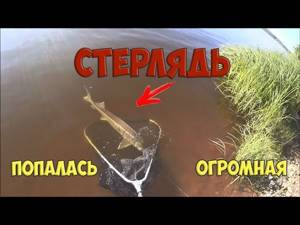
Fishing in general is an unforgettable event that brings a lot of positive emotions, and fishing in the Kirov region is no exception. There are no limits on catch volumes, but you should always fish with knowledge of the law, and it says that large specimens of rare fish should be released.
In the Vyatka River, fish can be caught using any gear. For example:
- fly fishing;
- spinning fishing;
- fly fishing.
Fishing on this river is not always effective due to frequent weather changes. In such conditions, the fish hides in deep holes, each time waiting out bad weather.
Reviews from fishermen
The total number of reviews on fishing in the Kirov region is positive. Most fishermen managed to find promising places and were left with a catch. This applies to both experienced fishermen and novice fishermen.
It makes sense to read some reviews from anglers who spent time on reservoirs in the Kirov region:
- “During the process of fishing with a spinning rod in the upper reaches of the Maloma River, I got the impression that there were no fish in the river at all, but towards the evening a crazy bite began, which was simply delightful.”
- “As a local fisherman, I have been fishing here since childhood, when my father taught me his craft. There is enough fish in the reservoirs, so there is enough for my children, whom I help find fishing spots and teach the intricacies of fishing.”
- “Coming to paid reservoirs you get a lot of pleasure. The most important thing is that we managed to catch trout.”
Paid fishing
This type of fishing appeared quite recently and is developing very intensively in our time. There are several fish farms known today that practice paid fishing:
- “Cordon Donuarovo” is located in the Kilmez district. It represents an entire recreation center with built houses, where all amenities are available, along with three meals a day and other opportunities. You can catch fish here in any part of the reservoir. Fishing per day will cost one and a half thousand rubles per person.
- Sosnovy village. Some local ponds breed carp and allow anglers to catch fish for 70 rubles a day, which is quite cheap. As for other services, you will have to pay for them separately.
- Fishing in the village of Klyukovo. Here they breed trout. Within the pond there is a house where you can spend the night. Large fish are caught here, and the low cost (only 100 rubles) attracts many anglers, especially since trout is caught here.
- In the direction of Strizhi, turning towards Doronichy, you can get to paid reservoirs created artificially. For 50 rubles a day you can catch any fish here.
- Sanatorium "Vyatskie Uvaly". There is a beautiful koi pond here. For one kilogram of caught fish you will have to pay 35 rubles. There is a lot of fish here, and the price is attractive.
- Isakovsky ponds. Fish such as perch, pike, and carp are found here, so this place is very popular both for local fishermen and for visiting fishing enthusiasts. Fishing prices may vary and you can only find out about them by arriving at the reservoir.
Species of fish prohibited from catching in the Kirov region
Species of fish prohibited from catching:
- sterlet of the upper reaches of the Kama River, whitefish, lampreys, brown trout (freshwater residential form), grayling, whitefish, Atlantic salmon (salmon), nelma, podust, bersh, white-finned gudgeon, Russian bystryanka, common sculpin.
Minimum size of fish caught in the Kirov region
When carrying out fishing, it is prohibited to produce (catch), accept, process, transship, transport, store and unload aquatic biological resources that have a fresh length (in cm) less than that indicated in the table.
Minimum allowed size of fish caught
| Name of aquatic biological resources | Fishing size, cm |
| Pike | 32 |
| Asp | 40 |
| Zander | 40 |
| Bream | 28 |
| Freshwater catfish | 90 |
| Carp | 40 |
| Burbot | 40 |
| Ide | 25 |
| Chekhon | 28 |
| Chub | 22 |
| Dace | 15 |
| Tench | 18 |
| Sinets | 24 |
| Cancers | 10 |
| Sterlet | 42 |
The commercial size of aquatic biological resources is determined in fresh form:
- in fish - by measuring the length from the top of the snout (with the mouth closed) to the base of the middle rays of the caudal fin (in sturgeon - from the top of the snout to the deepest part of the notch of the caudal fin);
- in crustaceans, by measuring the body from a line connecting the middle of the eyes to the end of the tail plates.
Important. Extracted (caught) aquatic biological resources having a length less than that indicated in the table above are subject to immediate release into the natural habitat with the least damage.
Daily fish catch rates in the Kirov region
The daily rate of production (catch) of aquatic biological resources (except for the case where a permanent or temporary ban on production (catch) during recreational fishing is established for such aquatic biological resources) for each citizen during recreational fishing is indicated in the table.
Permitted daily fish catch
| Name of aquatic biological resources | Daily production (catch) rate |
| Zander | 5 kg |
| Sterlet | 2 copies |
| Cancers | 50 copies |
Important. The total daily production (catch) rate for all types of aquatic biological resources, including those not listed in the table, is no more than 5 kg or one specimen if its weight exceeds 5 kg.
Important. If the total daily norm is exceeded, the extraction (catch) of aquatic biological resources is stopped.
In case of violation of the Fishing Rules in accordance with Part 2 of Art. 8. 37 of the Code of Administrative Offenses of the Russian Federation provides for administrative liability in the form of imposing an administrative fine on citizens in the amount of 2,000 to 5,000 rubles with or without confiscation of the vessel and other equipment for extracting (catching) aquatic biological resources. Responsibility for fish poaching is established by the Criminal Code of the Russian Federation (Article 256 of the Criminal Code of the Russian Federation).
Prepared by Personal Rights.ru
Additional information on the topic:
- General rules for fishing in Russia
- Federal Law on Recreational Fishing
- Fishing rules in the Astrakhan region
- Fishing rules in the Rostov region
Spinning fishing in 2018-2019
Such fishing has existed since ancient times and is common on most rivers, including the Vyatka. Donka fishing usually occurs at night.
Although, some fishermen are trying to practice daytime bottom fishing. Only night catches are more productive.
This type of fishing takes place from spring to late autumn. The sites should have a fairly clean bottom from the shore or from a boat.
As for the current, choose a calm one. Donka quite often comes across trophy specimens.
When bottom fishing, baits lie on the bottom and scare away fish less than baits that hang on a fishing line.
Donka fishing in Vyatka is carried out for fish that lead a predominantly bottom-dwelling lifestyle. This should include carp, burbot, pike or bream.
The list also includes roach and perch. And the species composition itself, which is allowed to be caught with donka, is quite impressive, from ruff to catfish.
It is impossible to accurately answer the question about the best place to fish for donk. Here everyone has their own preferences and speculations on this matter.
If we take into account the seasons, then in the spring it is more practical to fish with a donkey in the shallows, but in the autumn, choose deeper places.
Usually, on Vyatka, local fishermen use such bottom tackle as a zakidushka. You don’t even have to use a fishing rod.
You just need to tie the fishing line to a peg that is driven into the ground. And then reel this line after fishing on a special reel.
3-5 hooks with numbers 4-7 are mounted on the hook and a sinker weighing 40-100 grams is installed at the end of the fishing line, which is in the form of a cone or spoon. Recently, donka P has also become increasingly used.
Viktorova. It is a short rod with a length of no more than 1.
2 meters with fishing line 0. 3-0.
4 mm and with sharp forged hooks. As for the leashes for such gear, they are created no more than 20 cm.
This type of gear also has an elastic band 5-6 meters long.
